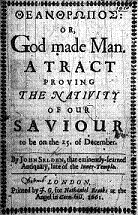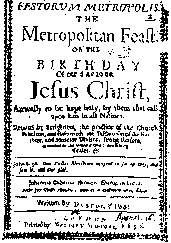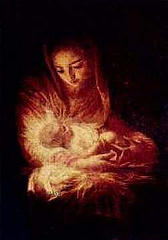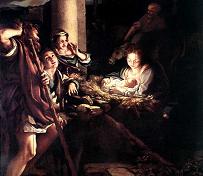Welcome!

Absent a “thus saith the Lord” or other positive proof, the calendar date of Christ’s birth can never absolutely be known or proved. Nevertheless, there is much in scripture and sacred history that strongly suggests Jesus was born on or near the received, traditional date of Dec. 25th – so much so, in fact, that we have every reason to accept the date as fully authentic. The purpose of this site is to provide readers with evidence of Christ's early winter birth so that they may celebrate Christmas day for the religious holiday it is, commemorating of the nativity of Christ.
With you, we hold the celebration of Christmas dear and believe few dates in the calendar have brought men and nations the joy that has traditionally surrounded the Savior’s birth. We are happy to be able to share the evidence with you here.
Our Newest Published Piece!
Bibliotheca Sacra
Pre- AD 196
Occurrence of the Christmas Date?
Kurt M. Simmons
Following these comments is a translation of what is sometimes referred to as the Epistle of Theophilus, but more properly known as the Council of Caesarea Concerning the Pascha, or the Acta Synodi for short. The tract is, or purports to be, an account of the Council of Caesarea about AD 196 to establish a uniform rule for the observance of the Christian Pascha (“Passover”), commonly known in the English-speaking world as “Easter." Read
________
Lukan Nativity Chronology and
Modern Versions:
How the Consensus View of Herod's Death has
Affected Translation of Luke
In this article we look at Luke’s Gospel and
questions of history and translation as they bear upon the time
of the nativity. We will conclude that the evidence weighs well
in favor of the traditional translation and view placing
Jesus’ birth in late December, 2 BC.
We're Published...Again!
___________________________
We're Published...Again!
Revisiting the FathersAn Examination of the Christmas Date in Several Early Patristic Writers
Kurt M Simmons, JD
The article that is redefining the debate about the origin of the Christmas date |
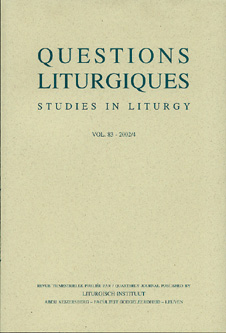 |
Read >>>
__________________________
“In the East” or “In Its Rising?”
The Star of the Magi and How Trendy New Versions Distort Matthew’s Gospel
In this article, we address the question whether magi saw the star “in the east” according to traditional translations, or, according to modern, trendy translations, the magi saw the star “in its rising?” We will conclude that the traditional, historical translation is correct, and that modern translations distort the meaning of Matthew’s Gospel.
___________________________
 |
Colin R. Nicholl's The Great Christ Comet- Academic Folly in High Places -
In this article, we examine the claim of
Colin R. Nicholl that he has discovered the “true star of
Bethlehem,” in his recent book,
The Great Christ Comet:
Revealing the True Star of Bethlehem (Wheaton, 2015).
We conclude instead that the book, although long in cometary
science, is short on fact and Bible, and stands as the latest
example of failed attempts to identify what God has deigned
should remain undisclosed. |
_______________________
We're Published!
The Origins of Christmas
|
| Read >>> |
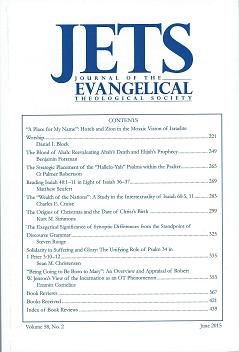
________________________
“Unto You Is Born This Day"
The Biblical Case for the December 25th Birth of Christ
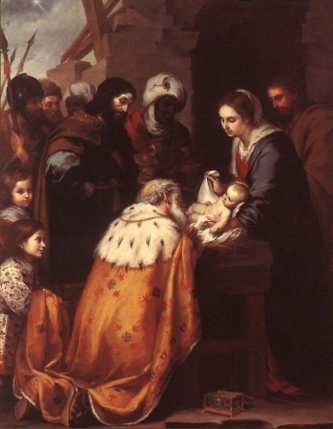 |
We often hear it said that
Jesus was not “really” born December 25th;
that this date is a mere fiction, surreptitiously
appropriated by church authorities in an attempt to
off-set and Christianize the pagan solstice; that, in
fact, Jesus was probably born in September, 6 or 7 B.C.
However, such charges
are relatively recent.
For most of church
history, December 25th
was received as the actual date of Christ’s birth,
handed down from earliest times.
Questions regarding
Christmas were first raised during the Reformation by
Puritans and Scottish Presbyterians, who attempted to
outlaw its celebration in Read>>> |
The Priestly Courses Testify to Jesus' Dec. 25th birth
Zechariah the father of John the Baptist was serving in the course of his priestly ministration when told his wife would conceive a son. John was six months older than our Lord. By identifying when Zechariah was serving and when John was conceived, we can determine when Jesus would have been born 15 months later.
click here

Bethlehem in December
Would Shepherds be watching their
flocks by night Dec. 25th in Bethlehem?
We often hear in objection to the Dec. 25th birth of Christ, that shepherds would not have been watching their flocks by night in the fields near Bethlehem as reported by Luke (Lk. 2:8). This is probably true of Bethlehem, Pennsylvania, where snow and bitter cold drive men indoors (picture below), but in Bethlehem, Judea, the story is very differnt indeed. Scripture tells us that the patriarchs Abraham, Isaac, and Jacob lived in tents year-round.
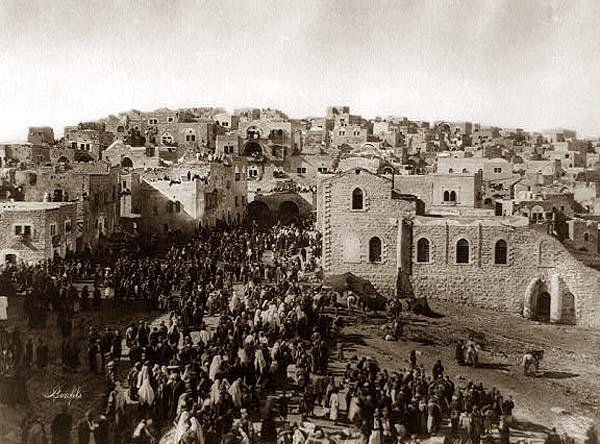
Christmas day, 1890
___________________________________
Star of Bethlehem or Nazareth?
In this article we look at attempts to identify the star seen by the Magi in the east, and show that the star led them, not to Bethlehem, but to Nazareth forty-odd days after Christ’s birth.
Johannes Kepler

Attempts to identify the “star of Bethlehem” have come and gone down through the ages. Various phenomena and astrological occurrences have been proposed and served to corroborate the date of Christ’s birth. Among the earliest and longest standing attempts was that made by Johannes Kepler (1571-1630). Read »
____________________________
Kurt Simmons Interviewed on YouTube Regarding Dec. 25th Birth of Christ

Part One https://youtu.be/ZEUSYs8kptc
Part Two - Part Three
______________________________
The Virgin Birth and Divine Heir of the Davidic Throne
Time and eternity met in Bethlehem Dec. 25th
Our first ancestors were made in the
image and likeness of God and stood in no need of a
Savior. However, with the fall the race became “carnal,
sold under sin” (Rom. 7:14). That is, whereas God made
man to be a partaker of his goodness and innocence, the
fall morally estranged man from his Maker, the source of
eternal life. To thus restore him to a condition of
fellowship with himself and free him from bondage, God
promised a “kinsman redeemer” who would vanquish sin and
death, and enable men to share in eternal life.
________________________________
|
EXCERPT OF
THE PANARION
EPIPHANIUS OF
BOOK IV
|
 |
______________________
Gregory Thaumaturgus'
Early Witness of the Christmas Date
|
Gregory Thaumaturgus (A.D. 205-265) was
born to pagan parents, and was a native of Neo-Caesarea, the
first city of Pontus. He became a student of Origen in
Palestinian Caesarea, where he was instructed in logic,
geometry, physics, philosophy, and ancient literature. Under
Origen’s influence, Gregory soon converted to the faith. After
about five years of remaining with Origen, Gregory returned to
his native Neo-Caesarea, where he became bishop and served with
great distinction. The passage in question has to do with the
annunciation and conception, which Gregory places at Passover,
which occurs at the full moon in the month of Nisan (Abib).
Since Gregory almost certainly equated Passover the year Christ
was conceived with March 25th, the nativity nine
months later would have been December 25th, making
this one of the earliest evidences of the traditional date of
Christ’s birth: |
Read >>>
________________________________________
Commentary on
Matthew Chapter Two
|
 |
The Calendar, The Nativity, and
the In this article, we investigate many
interesting facts from scripture relative to dating time, and
look at the religious and civil facets of the calendar, and its
testimony to the nativity, kingdom and coming of Christ.
|
_____________________________
|
Ghosts of
Christmas Past Puritan England 1641-1660 A Vindication of Christmas Day or the Solemnity of the Nativity of Christ London 1659 Read |
 |
_____________________________
- Christmas-Day -

Primitive Christianity
OR THE
RELIGION
OF THE
Ancient Christians
In the first ages
OF THE
GOSPEL
A.D. 1676
Epiphany...was
of old promiscuously used either for the feast of Christ’s
Nativity, or for that we now properly call by that name:
afterwards the titles became distinct; that of Christ’s Birth
(or as we call it Christmas -day) was called the
Nativity, and
Theophania, the appearances of
God in the flesh, two names importing the same thing as
Nazianzen notes.
For the antiquity of it, the first footsteps I
find of it are in the Second Century, though I doubt
not that it might be celebrated before, mentioned by
Theophilus
Bishop of
Caesarea,
about the time of the Emperor Commodus: but if any credit might
be given to the Decretal Epistles, it was somewhat elder than
that, Pope Telesphorus,
who lived under Antonius
Pius, ordaining divine Service to be celebrated, and an
angelical Hymn to be sung the night before the Nativity of our
Saviour.
To Consult Original Book, Click Here
_________________________
The Nativity Poem
Kurt Simmons
Simple chronology places the nativity of Christ in the closing weeks of the Julian year
Did Mary travail, was our Lord born,
While yet it was night, before it was morn?
Whilst shepherds flocks watched, but other men
slept,
This day that men long centuries have kept?
Do we well the Lord’s birth to remember,
Year by year the twenty-fifth of December?
Fear not, good Christian men, be not afraid,
It was surely this night when it was said,
“Unto the sons of earth is born this day,
He whom prophets foretold and saints did pray.
And, lo, this a sign unto you shall be,
The babe in a manger in David’s city.”
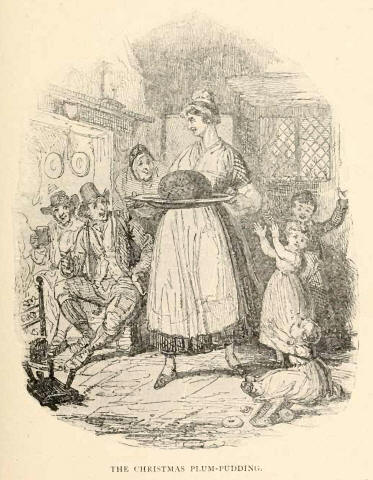 |
10 slices white bread ¼ cup butter 1 cup scalded milk 3 tablespoons brandy ½ cup sugar 1 teaspoon nutmeg 4 eggs, separated ¼ teaspoon cinnamon 1 1/3 cups raisins lightly floured ¼ teaspoon cloves ½ cut finely chopped dried figs ¼ teaspoon mace 3 tablespoons finely chopped candied citrus rind 1 teaspoon salt |
Butter and flour a 2-quart steam pudding mold. Heat water in a pot large enough to hold the mold. Crump the bread, and soak it in the hot milk. Cool and add the sugar, the well-beaten egg yolks, raisins, figs, and citrus rinds, and butter. Add to the crumb mixture, then stir in the brandy, nutmeg, cinnamon, cloves, mace, and salt. Beat until well blended. Beat the egg white until they are stiff but not dry. Stir a third of the whites into the pudding mixture, then gently fold in the remaining whites. Spoon the mixture into the mold and cover. Put in the large pot and steam for six hours. Remove and let cool for 10 minuets before unmolding. Serve warm with Hard Sauce.
Hard Sauce: There are different flavored sauces. Our favorite is lemon/brandy. 5 tablespoons butter - 1 cup confectioners sugar - 1 tablespoon lemon - 1 tablespoon brandy - Cream the butter, then slowly add the sugar, beating well with an electric beater or by hand until creamy and pale yellow. Add the lemon and brandy. Cover and refrigerate until needed.
Homemade Candied Rind: We recommend homemade rinds, rather than the ghastly store-bought kind used in fruitcakes. Once you uses these, you will never go back. Blanch 1 part orange to 2 parts lemon rinds in boiling water. Remove. Let cool, and finely dice. Add 2 cups of sugar to 1 cup water and bring to a boil. Add rinds. Remove from heat; let sit overnight. Repeat once or twice more until rinds obtain desired degree of candying. Store in sugar surup in refridgerator.
___________________________________
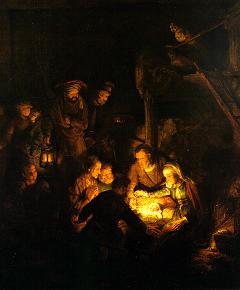
Adoration of the Shepherds
All rights reserved.
 John Seleden’s
John Seleden’s